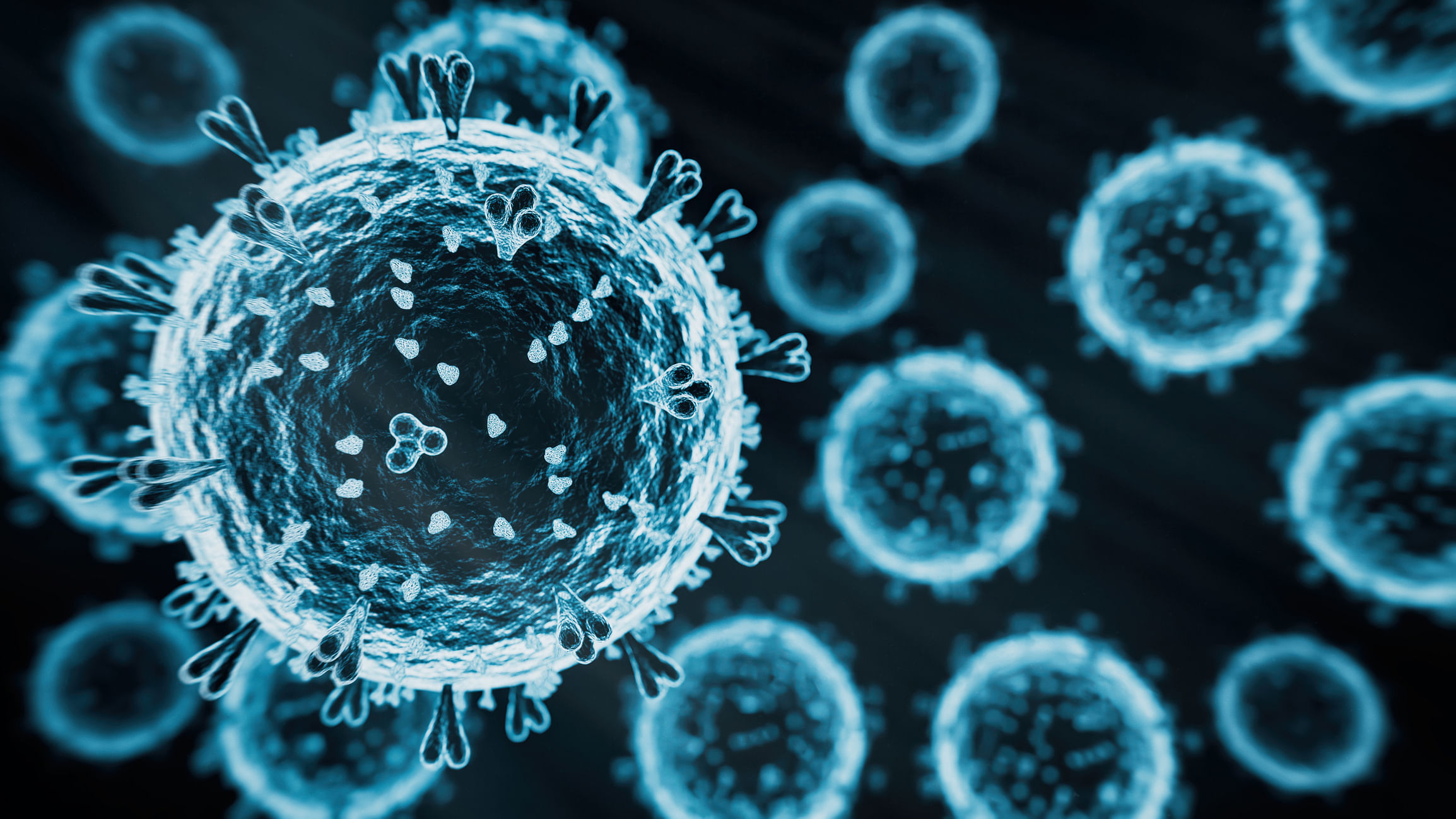
An illustration of a virus.
Credit: iStock Photo
A new threat to public health—the Chandipura virus—has cropped up in Gujarat, with 29 confirmed infections and 14 suspected deaths.
While not a new discovery, the re-emergence of the Chandipura virus is still alarming, given its high mortality rate.
What is the Chandipura virus?
First identified during an outbreak of encephalitis in the village of Chandipura in Maharashtra in 1965, the RNA virus belongs to the Rhabdoviridae family that is associated with encephalitic illnesses.
The virus primarily affects children and the onset of symptoms after infection is rapid. However, it is not contagious.
What are the symptoms of Chandipura virus infection?
Symptoms of a Chandipura virus infection include the sudden onset of high fever, severe headaches, nausea, and even convulsions. In extreme cases, patients might also fall unconscious and get into a coma before eventually succumbing.
How to treat Chandipura virus infections?
No specific anti-viral treatment or vaccine exists for Chandipura virus infections, and treatment involves supportive care to alleviate symptoms and prevent further deterioration of the patent.
Most patients require hospitalisation, and in cases when patients exhibit severe neurological symptoms, intensive care may also be required.
Hydration is crucial for recovery, and anti-pyretics and anti-convulsants may be administered to relieve symptoms.
How does Chandipura virus spread?
While the transmission mechanism of the Chandipura virus is not completely understood, it is a vector-borne disease that is transmitted via sandfly bites.
How deadly is the Chandipura virus?
Earlier outbreaks suggest that Chandipura virus infections carry a high risk of death.
In a 2003 outbreak, 189 of 329 infected children died in Andhra Pradesh and Maharashtra, and sporadic outbreaks in 2009 and 2011 also saw several deaths.
Sporadic outbreaks were also reported in Gujarat in 2014, 2016, and 2019, but these outbreaks were localised and did not affect too many people.